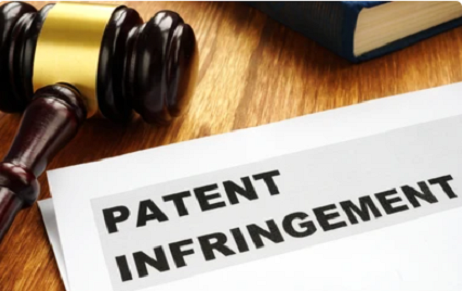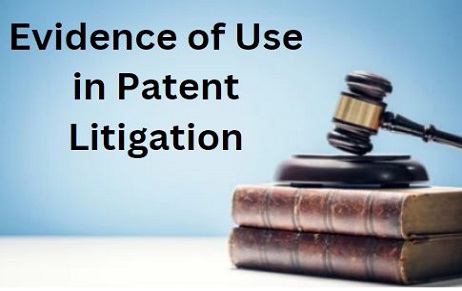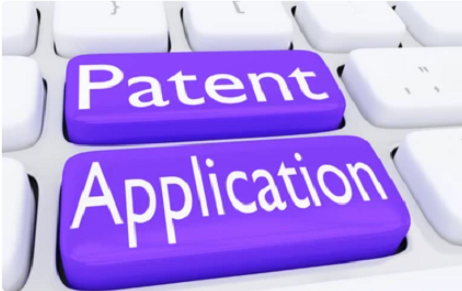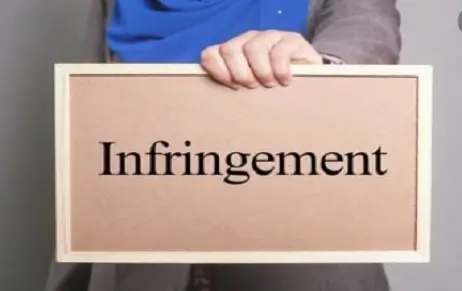All over the world today businesses strive for growth by maintaining a competitive edge in…
Patent Infrigement And Protection: Global Scenario
Introduction
A patent application is a formal form of request pending approval from the authorized patent office for the granting of a patent for an invention that is described in the patent specification. In the Indian subcontinent, the complete patent registration process includes a series of steps that need to be compulsorily followed to get a patent in India, however, any such patent granted by the Indian laws shall be limited only to the geographical area of the Indian subcontinent and not beyond that. This is where international patent filing and application and grant of patent comes to the force. The Patent Cooperation Treaty is an international treaty that allows for seeking patent protection for any invention at any instant in a large number of countries by filing a single patent that is recognised globally instead of going through the hassle of filing patents in several separate countries or multi-regional patent applications.
International Patent Filing
It should be known that an applicant does not apply for an “international patent” when the applicant applies for the same under the PCT, the World Intellectual Property Organisation is the nodal authority administering the applications under the PCT. It must be known that the WIPO does not grant international patents but under the PCT filing process it produces the patent application that has passed initial compliance formalities of filing, knock out search, and evaluation to the national patent offices of as many country members of the PCT as the applicant wishes for, thereafter they are filed for the national phase of that particular country. Thereby the WIPO through PCT patent filing streamline the process for allowing patent protection in various countries by a single series of steps and prerequisites.
Patent Infringement
Patent infringement is referred to as a violation of the rights of the patentee with respect to the invention for which a patent has been granted is termed as patent infringement, in simpler words when the rights of the patent holder is violated by a third party without procuring the consent or license of the authorized patent holder, then this third party is said to have infringed patent rights of the holder. An individual may also be an infringer if he “actively induces infringement of a patent.” Also, an individual who sells a product knowing it is specially made or adapted for use in an infringement of a patent shall be liable as a “contributory infringer.”
[Image Sources: Shutterstock]

However, there are certain methods that can be adopted that can protect the inventor from causing infringement on any other existing invention, the first of them being Novelty Search, now what is a novelty search or patentability search? It is a search, that can be conducted by an inventor, his patent attorney or a patent lawyer, his firm, etc, which is performed to check if there is any prior or similar patent that already exists in the database prior to the filing of patent application. The second method could be to obtain a patent clearance search report (Right to user search) or Freedom-to-operate (FTO), now what is a patent clearance search or Freedom to operate, it is a search that actively is focused upon finding similar patents that are in the market or similar patent applications that can infringe your product. It is an essential exercise for an inventor or business who want to save themselves from a lawsuit.
Patent Infringement Proceedings
European Union
The European Union after years of debate and preparation started the operations of the Unified Patent Court, such introduction involves the creation of a single court that can hear European Union patent disputes across borders bringing about a fundamental change to the patent disputes that were litigated prior to such establishment, “The UPC is an international court common to currently seventeen EU Member States, in which the Agreement on a Unified Patent Court (UPCA) is in force.”
The UPC offers a specialized, uniform and efficient framework for patent litigation at a European level, it hears upon revocation and infringement suits. The jurisdiction of the court is exclusive in respect of “classic” issues related to patents in the European region.
United States Of America
In the case of Brown v. Duchesne, 60 US 183 (1856) it was firmly established that the United States Patent laws are limited to the bounds of United states, it was ruled that the power granted by patent rights and laws is a power that is domestic in character and “ necessarily confined within the limits of the United States”, patent infringements suits subject to the American jurisdiction are at first instance filed in the U.S. federal district courts, and their respective appeals if any including any counterclaims are of exclusive jurisdiction of the United States Court Of Appeals for the Federal Circuit (CAFC), any district court decision that involves and issue related to patent laws are subject to review by the CAFC.
The extra-territorial application of US Patent laws owes its origin to the case of Deepsouth Packing Co. v. Laitram Corp,wherein the defendant was “manufacturing all of the components of a patented shrimp de-veining mechanism and then shipping the components, unassembled, overseas for assembly and use. Since the claimed device was not made, used or sold in the United States there was no direct infringement.”, following the suit congress enacted 35 USC, Sec 271(f) and Sec 271(g) in 1984, creating a first for framing statutory basis for a form of extraterritorial application of United States patent laws.
The Supreme Courtin the case of Microsoft Corp. v. AT&T Corp. took the chance to look into the subject of exterritorial reach of U.S. patent damage. In this particular case, Microsoft practised writing the source code to its software in the United States and then shipped a “gold disk”, that contained the source code, to Ireland where the code would be compiled and thereafter shall be loaded onto machines that were then sold in the European market. It was held that “The claim in the patent at issue was directed to a computer that was programmed to perform a specific task, and the Court ruled that the disk that was supplied from the United States was not a “component” of the invention.” Along with other decisions in the same field with respect to patent laws, it can be concluded that limits of damages in the US patent cases are calculated in a way that foreign sales are not included in the part of the revenue base that is considered in making royalty determination in the US as a general practice. However, this creates opportunities for potential infringers to actualise profits in markets outside the United States.
India
Proceedings pertaining to infringement of a patent are initiated by filing a suit of civil nature in district courts, or in High courts of particular jurisdictions. However, with the Commercial Courts, Commercial Appellate Courts, Commercial Division and Commercial Appellate Division of High Courts (Amendments) Act, 2018 which has come into effect from May 3, 2018 the traditional courts shall be less burdened with the matters of Intellectual Property. Collectively known as ‘The Commercial Courts Act, 2015’ which established a specialized court to adjudicate commercial disputes pertaining to Intellectual property with an aim to reduce the lifespan of such matters. Commercial disputes of value exceeding 3lacs and above shall be filed in courts established by the Commercial Courts Act 2015. Depending upon the limit imposed, pecuniary jurisdiction can be addressed before the appropriate forum. For example, the Delhi High Court limit for pecuniary jurisdiction is INR 2cr.
Conclusion
In conclusion, the process of obtaining a patent in the Indian subcontinent involves a series of mandatory steps outlined in the patent specification. However, the scope of protection is limited to the geographical area of the Indian subcontinent. To extend patent protection beyond these borders, the international patent filing process becomes crucial. International patent filing under the Patent Cooperation Treaty (PCT) streamlines the global recognition of a patent application. While the World Intellectual Property Organization (WIPO) does not grant international patents, it facilitates the filing of a single patent application that can be recognized globally. This significantly simplifies the process, allowing applicants to seek patent protection in multiple countries simultaneously.
However, with such patents arrive the potential problems of patent infringement, the violation of patent rights, for patent holders.In summary, the complexities of patent registration, international filing, infringement, and legal proceedings necessitate a nuanced understanding of regional and international patent laws, emphasizing the importance of legal expertise in navigating these intricate processes.
Author: Abhinav Mishra, a student at Dr. B.R. Ambedkar National Law University, in case of any queries please contact/write back to us via email to [email protected] or at IIPRD.
REFERENCES
- Anand And Anand. 2021. At a glance: patent enforcement proceedings in India. May 4. Accessed November 20, 2023. https://www.lexology.com/library/detail.aspx?g=9551ee8e-cba1-4915-85af-1ac6b7b06361.
- Brown v. Duchesne. 60 (US Federal Court).
- Cletus, Anju. 2015. November 7. Accessed November 18, 2023. https://www.livelaw.in/suits-valued-below-rs-2cr-can-no-longer-be-filed-in-the-delhi-hc-for-commercial-matters-lower-limit-is-rs-1cr/.
- Deepsouth Packing Co. v. Laitram Corp. 406 (United States Supreme Court).
- FindLaw Staff. 2023. Patent Infringement and Litigation. August 11. Accessed November 20, 2023. https://www.findlaw.com/smallbusiness/intellectual-property/patent-infringement-and-litigation.html.
- Herbert Smith Freehills. 2023. The Unified Patent Court (UPC) and the Unitary Patent. Accessed November 2023. https://www.herbertsmithfreehills.com/insights/key-topics/strategic-advisory/the-unified-patent-court.
- Makman, David A. 2019 . “Cross Border Patent Disputes.” Cross Border Patent Disputes 383-388.
- Microsoft Corp. v. AT&T Corp. 550 (United States Supreme Court).
- Neustal Attorneys At Law. n.d. Patent Infringement. Accessed November 2023. https://neustel.com/patents/patent-infringement/.
- Geeta ( S&A Law Offices). 2020. India: Patent Infringements And Their Types. June 9. Accessed November 2023. https://www.mondaq.com/india/patent/949758/patent-infringements-and-their-types.
- Schneiderman, Anne M. n.d. “Filing International Patent Applications under the Patent Cooperation Treaty (PCT): Strategies for Delaying Costs and Maximizing the Value of Your Intellectual Property Worldwide.” In Handbook Of Best Practices, 941-945.
- The United States Patent and Trademark Office. 2013. 608 Disclosure. Accessed November 2023. https://www.uspto.gov/web/offices/pac/mpep/s608.html#sect608.01.
- Unified Patent Court . n.d. UPC Structure . Accessed November 19, 2023. https://www.unified-patent-court.org/en/court/presentation.
- United States Patent And Trademark Office. 2019. International Patent Cooperation. January 30. Accessed November 2023. https://www.uspto.gov/patents/basics/international-patent-cooperation#:~:text=An%20international%20treaty%20making%20it,national%20or%20regional%20patent%20applications.



